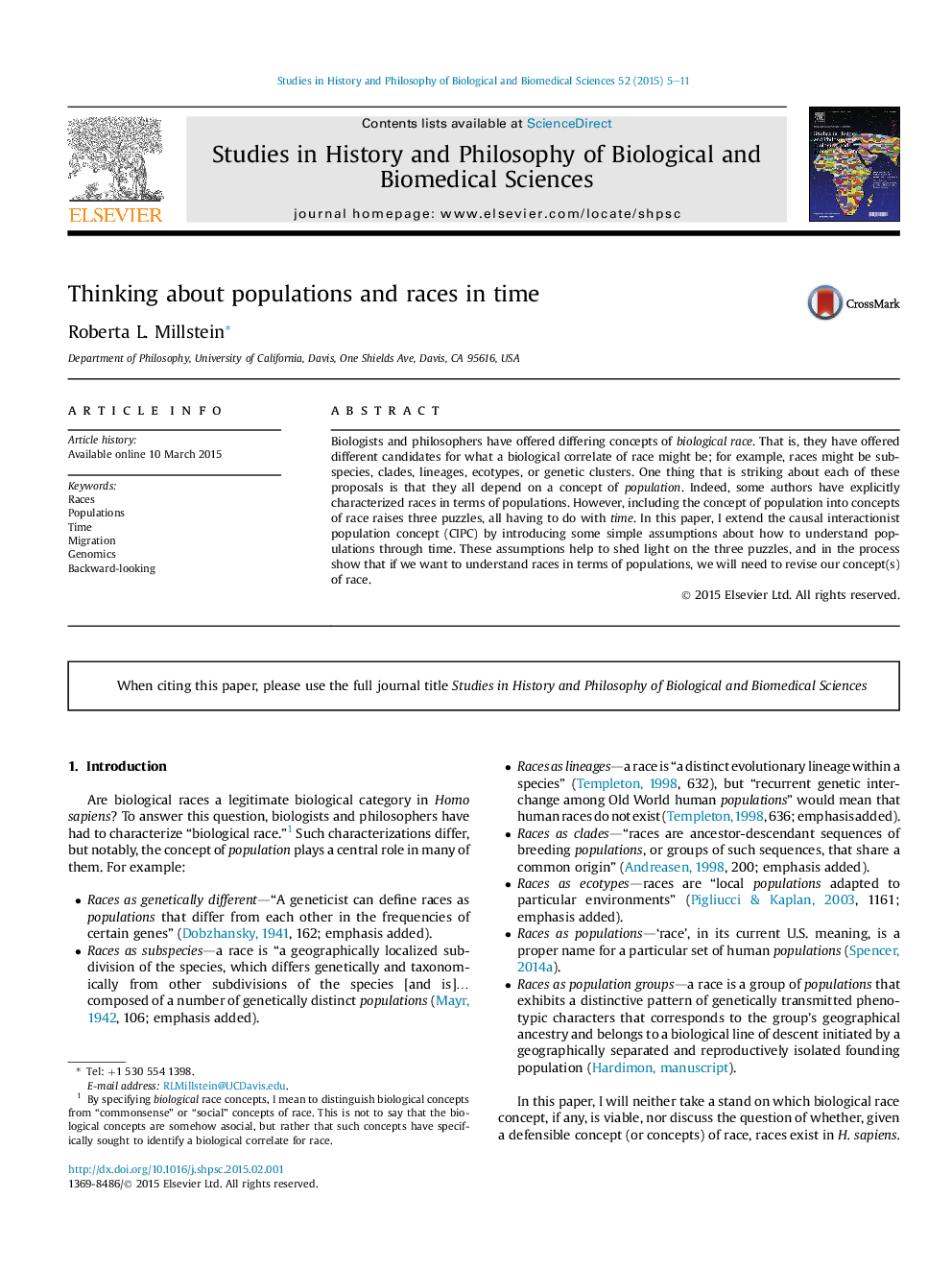| Article ID | Journal | Published Year | Pages | File Type |
|---|---|---|---|---|
| 1161645 | Studies in History and Philosophy of Science Part C: Studies in History and Philosophy of Biological and Biomedical Sciences | 2015 | 7 Pages |
•A person is a part of only one population at a time, based on current interactions.•Race concepts invoking populations need to specify relevant populations and times.•Populations are both backward looking and forward looking.•Race concepts may introduce problems if they invoke forward-looking populations.•Construing genetic clusters as races or populations obscures relevant time periods.
Biologists and philosophers have offered differing concepts of biological race. That is, they have offered different candidates for what a biological correlate of race might be; for example, races might be subspecies, clades, lineages, ecotypes, or genetic clusters. One thing that is striking about each of these proposals is that they all depend on a concept of population. Indeed, some authors have explicitly characterized races in terms of populations. However, including the concept of population into concepts of race raises three puzzles, all having to do with time. In this paper, I extend the causal interactionist population concept (CIPC) by introducing some simple assumptions about how to understand populations through time. These assumptions help to shed light on the three puzzles, and in the process show that if we want to understand races in terms of populations, we will need to revise our concept(s) of race.
